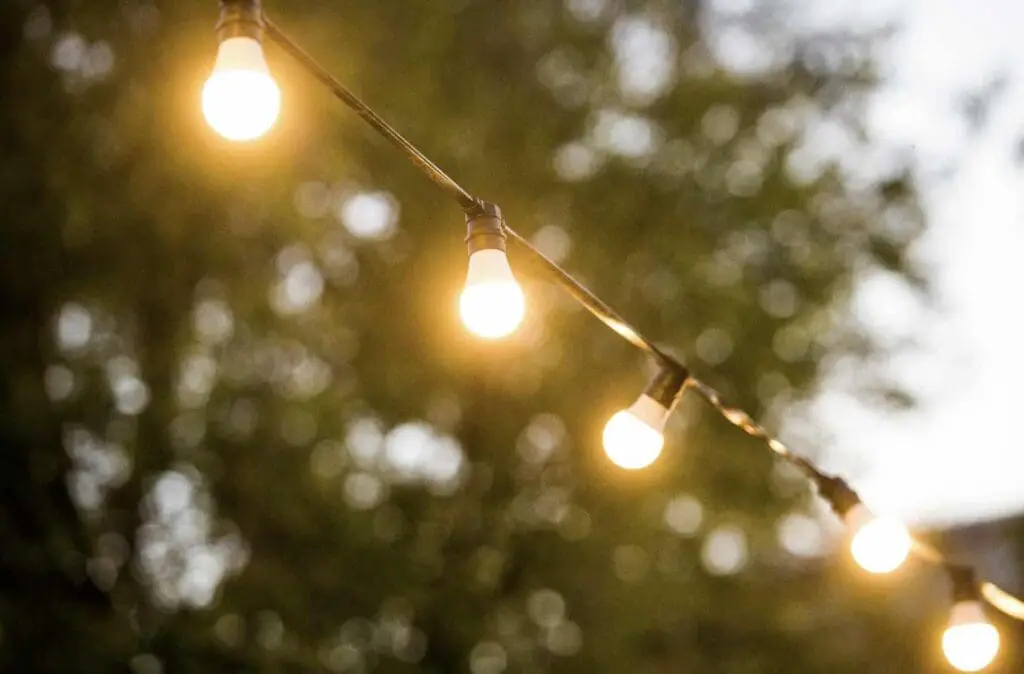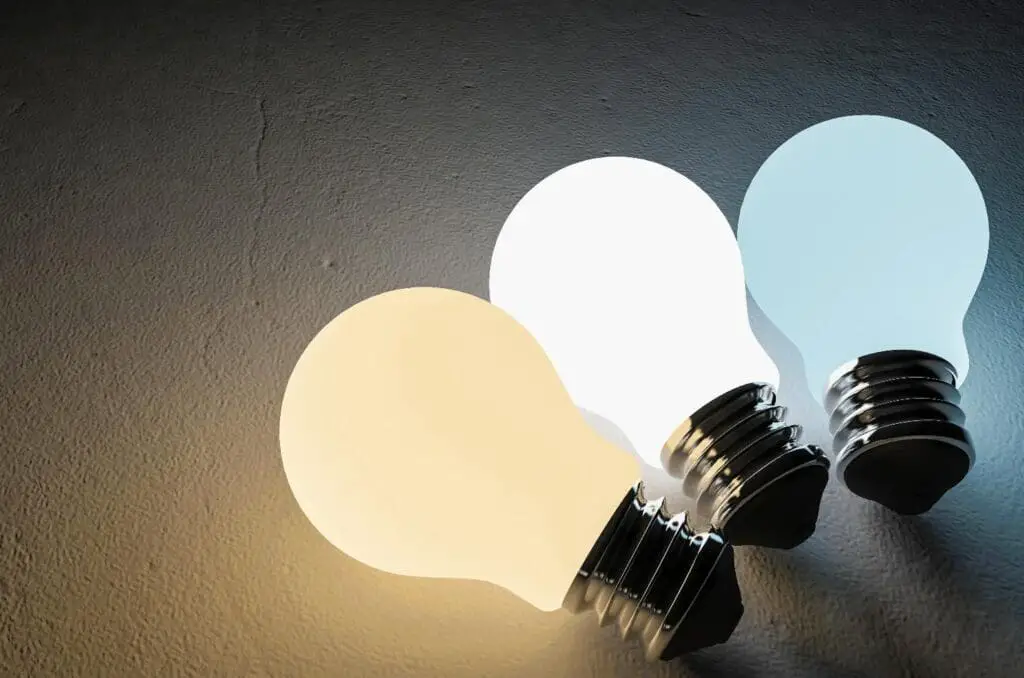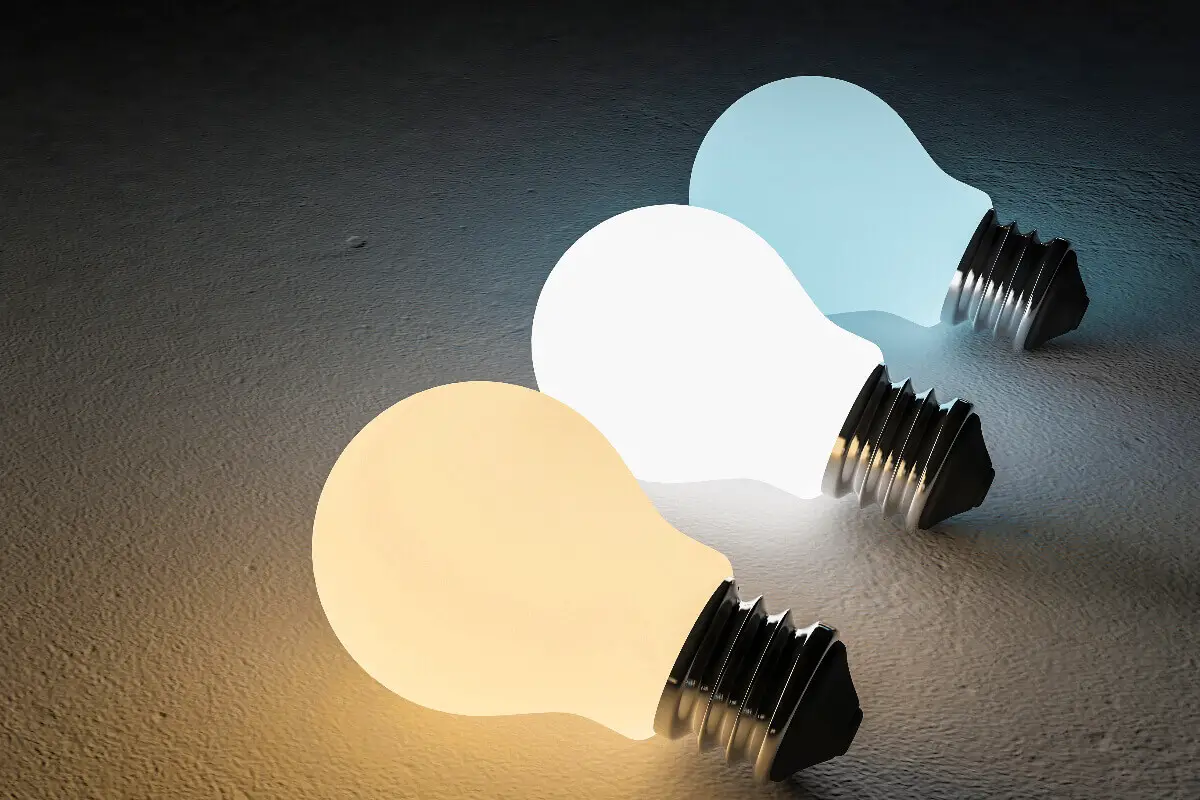When we consider the ambiance of a room, the color of the light may not be the first element that springs to mind, yet it holds the subtle power to shape our environment and influence our mood. Exploring the nuanced spectrum of light, from the warm golden hues of a cozy fireplace to the crisp daylight clarity of a morning sky, we tap into an invisible palette that can transform the spaces in which we live and work.
Understanding color temperature, a concept measured in Kelvin, allows us to peer through the lens of practicality and emotion, giving us the tools to craft atmospheres that can comfort, stimulate, or focus our minds. As we embark on this illuminating journey, let us uncover light bulb colors’ psychological impacts and practical applications, enhancing our world one bulb at a time.
Table of Contents
- Understanding Color Temperature
- Psychological Impact of Light Colors
- Light Bulb Color Applications
- Related Content
Understanding Color Temperature
Lighting Atmosphere 101: Understanding Color Temperature
When stepping into the enchanting lighting world, we often overlook one subtle yet critical aspect: color temperature. Let’s dive into the nuances of this concept and illuminate why it’s a game-changer for setting the right mood in any space.
So, what exactly is color temperature? It’s a way to describe the warmth or coolness of a light source, measured in the unit Kelvin (K). Low Kelvin numbers mean warmer, yellowish hues; think cozy candlelight vibes at 1000 to 2000K.
Middle-range numbers, around 3100 to 4500K, represent neutral or “cool white” daylight colors. Climb to 4600 to 6500K, and you’re in the territory of crisp, refreshing “daylight” blues.
Why does this matter? Imagine snuggling up with a book in a room with high Kelvin blue-toned lights. It feels off, right? That’s because warmer tones, typically under 3000K, are the MVPs of relaxation; they’re perfect for living rooms and bedrooms where comfort is key.
This warm glow is like a visual hug – intimate and inviting, perfect for sinking into your favorite armchair and letting the day’s stresses melt away.
As enthusiasts, we know that the middle-of-the-road temperatures provide a clean slate. Lights in the “cool white” zone lend themselves wonderfully to bathrooms and kitchens, where tasks call for clear, bright illumination. No one wants to chop onions under the sultry glow of a warm light – that’s a recipe for a culinary disaster.
On the flip side, “daylight” temperatures blend art and science. This spectrum might initially seem too clinical, but it’s a ray of sunshine in home offices or crafting rooms. The cool hues at the higher Kelvin end of the scale stimulate concentration and mirror the invigorating midday sun, providing an energetic ambiance for productivity.
It’s not all about indoor lighting, either. Outdoor lighting embraces color temperature to create safety, security, and aesthetic appeal. A front porch illuminated with warmer lights welcomes guests with open arms, while more astonishing lights lining a driveway deter uninvited guests by mimicking broad daylight.
Toying with color temperature is not just a pastime; it’s a transformative tool. Who knew such a simple concept could wield so much power over the feel of a space? By understanding and applying the principles of color temperature, anyone can enhance the ambiance and functionality of their environment.
It’s a fascinating element that, when mastered, completely changes the game in lighting atmosphere – warm or relaxed, each Kelvin degree holds the potential to set the perfect scene.

Psychological Impact of Light Colors
Diving deeper into the rabbit hole of lighting, we discover much more than warmth or coolness to consider. The psychological influence of different light colors, or chromotherapy, can significantly affect the ambiance of a space and even the well-being of the individuals within it.
This aspect of lighting might not be as initially overt as temperature, but it is just as powerful.
Venturing beyond color temperatures, let’s explore the spectrum of colors themselves and how they can shape our environment and mood. Every color has a unique wavelength and energy, which can trigger different psychological responses.
For example, red is often associated with passion and vitality. This isn’t just cultural symbolism; there’s psychology behind it. Red light can stimulate the body, potentially increasing heart rate and blood flow. That’s why red can be effective in social areas of the home or establishments to foster interaction and liveliness.
When it comes to blue light, the connotations shift drastically. The presence of blue lighting can induce feelings of calm and serenity. Picture the stillness of an ocean or the tranquility of a clear sky.
Blue light is a strategic choice for bedrooms or bathrooms where relaxation is the goal. However, counterintuitively, too much blue light from screens, incredibly late in the evening, has been found to disrupt our circadian rhythms.
Next in the palette, green is the color of nature, and it’s not just for plants. Greenlight is known to provide a restful and reassuring presence. It’s often used in environments where stress reduction is desired, such as hospitals or wellness centers, to promote healing and peace.
Yellow offers an optimistic and cheerful vibe on the spectrum’s brighter side. Incorporating yellow light can energize a room, stimulate mental activity, and brighten moods, making it an excellent choice for kitchens, playrooms, or creative spaces.
Let’s not overlook the subtle yet profound effect of violet light. This color often denotes luxury and creativity. Violet light can foster a sense of artistic inspiration and luxury, suitable for spaces intended for reflection or deep thought.
Where does this leave those crafting a lighting plan or selecting bulbs for their next room renovation? The takeaway is profound. To harness the full potential of lighting, one must think beyond just the visible and consider the invisible effects.
The colors we bask our rooms in do more than illuminate; they can transform our mood, thoughts, and health.
Whether fine-tuning a living room for hosting guests, a bedroom for better sleep, or an office for productivity, acknowledging the psychological influence of different light colors is akin to wielding an interior designer’s magic wand. It’s shaping a room and the experiences and feelings that unfold within it.
The art of lighting is thus a fusion of science and soul, blending the understanding of wavelengths and psychology with a touch of personal flair. This facet of the lighting hobby unveils a new layer of depth to explore and manipulate, encouraging fans to cast their spaces in the best possible light.

Light Bulb Color Applications
Diving right into the heart of colored lighting, starting with what is often overlooked—accent lighting—creative hobbies will come to life under the energizing presence of violet light bulbs.
A beacon for imagination, violet shades can spark inspiration, intensifying the creative process for artists, writers, and musicians. Position these lights in zones dedicated to brainstorming and creativity for a stimulating effect.
For visual comfort during screen time, a nuanced approach is required. The blue light emitted from most electronic devices is sometimes too harsh and increases eye strain. Consider bulbs that filter out the extreme blue spectrum yet remain close to the cool-white temperature range for workspaces with computers.
Don’t underestimate the power of red light bulbs when hosting dinner parties or intimate gatherings. These can be significantly used as they bring a sense of luxury and warmth. Please place them in dining rooms to enrich the ambiance, make meals feel more opulent and inviting, and play with our associations with warmth and nourishment.
The bedroom, a sanctuary of calm, benefits significantly from green light bulbs. Renowned for their restful qualities, they provide a balance that can enhance the feeling of serenity in a space dedicated to rest and rejuvenation. While it might not be the first choice for a primary light source, using these lights in the corners or as nightlights can subtly invoke tranquility.
Yellow light bulbs should not be confined to desk lamps or reading nooks. They exude an optimistic, cheerful vibe that can bring a welcoming glow to entryways, hallways, and stairwells. The gentle boost of positivity makes these transition spaces feel more inviting.
Of course, the placement of each light color should be strategic. Task lighting should be bright enough without creating glare, making adjustable fixtures a gem in the hobbyist’s nook. Ambient lighting should bathe a room in comfort, so utilize dimmer switches with colored bulbs to fine-tune the atmosphere.
Beyond visible effects, remember light’s invisible influence, especially in spaces used for meditation or relaxation practices. Soft, warm tones, for instance, can help reduce anxiety and allow for a peaceful state of mind.
In bathrooms, where practicality meets personal care, cool white bulbs around mirrors mimic daylight and provide excellent illumination for grooming. In contrast, soft red or warm white bulbs in the corners can create a spa-like environment during a relaxing bath.
Lastly, integrating innovative lighting systems allows for a personalized experience. One can easily transition from blue-enriched white light for productivity to a warm amber for evening downtime. The fusion of technology with color theory has opened new dimensions in cultivating an environment responsive to every need and activity.
In the ever-evolving sphere of interior lighting, knowing where and how to implement different light bulb colors can dramatically transform the functionality and feel of any space. As every shade casts light and influence, the choice becomes essential to lifestyle and well-being, turning the mundane into the magical.

The power of light extends beyond mere visibility. It is a designer’s brush, an artisan’s tool, and a health enthusiast’s companion, deftly shaping the tapestry of our daily experiences.
As we have navigated through the arc of understanding, from the technicalities of Kelvin to the impressions left by colors on our psyche, the path forward is lit with the knowledge of making deliberate choices in our lighting.
Through purposeful selection and thoughtful application of light bulb colors, we can sculpt an environment that pleases the eye and resonates with our innermost sensibilities. Armed with this wisdom, the light that guides us home is not just one of direction but of deliberate design.
If you want to see how Mondoro can help you with your Ul Certified lamp needs, we would love to talk to you about how we can help you.
Find out more about how Mondoro can help you create, develop, and manufacture excellent home decor and furniture products – don’t hesitate to contact me, Anita. Check out my email by clicking here or become a part of our community and join our newsletter by clicking here.
Mondoro gives out a FREE Lookbook to anyone interested. You can receive a copy of our latest Lookbook by clicking here.
Listen to our Podcast called Global Trade Gal. You can find it on all major podcast platforms. Try out listening to one of our podcasts by clicking here.
Subscribe to our Mondoro Company Limited YouTube Channel with great videos and information by clicking here.
Related Content
What Is The Difference Between LED, CFL, And Incandescent Light Bulbs?
There can be a little bit of confusion about the difference between an LED or incandescent bulb and which light bulb is the most energy-efficient one to use.
You can discover more by reading What Is The Difference Between LED, CFL, and Incandescent Light Bulbs? by clicking here.
Hand Weaving Rattan Mats for Home Decor Products, What You Need To Know
The rattan mats are woven by hand on handlooms with a small electrical motor. The rattan is cut into small pieces and either dyed or left natural before handwoven. The workers who weave the rattan must be highly skilled and be able to work very quickly and accurately. There are various home decor and home furniture products that the rattan mats can use.
By clicking here, you can learn more by reading our blog Hand Weaving Rattan Mats for Home Decor Products, What You Need To Know.
Why Do We Use Lampshades And Light Fixtures?
Lampshades and light fixtures are something that most people have in their homes. Almost every interior space will have some lampshades and light fixtures. But lampshades and light fixtures are two different things that have other uses.
You can learn more by reading Why Do We Use Lampshades And Light Fixtures? by clicking here.


